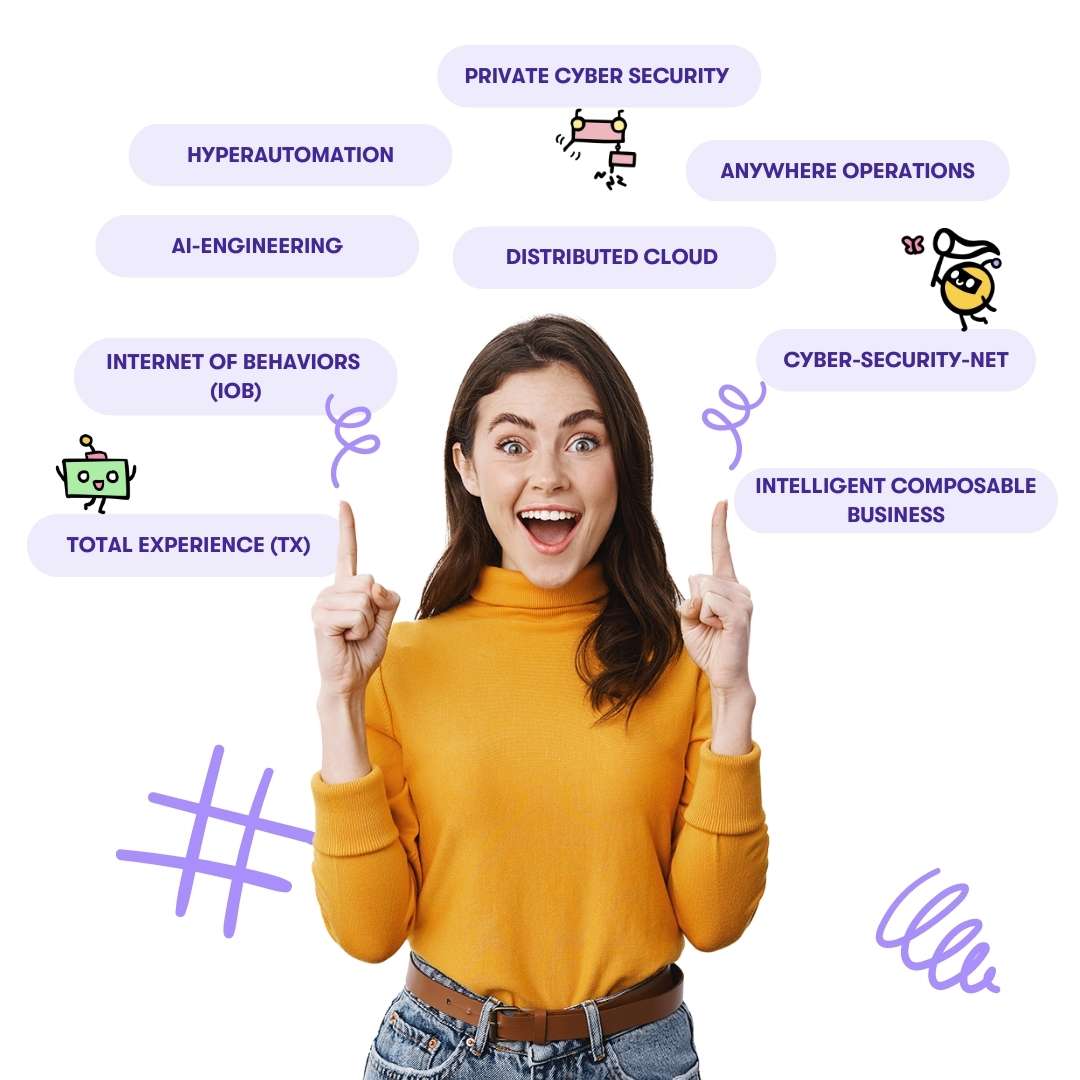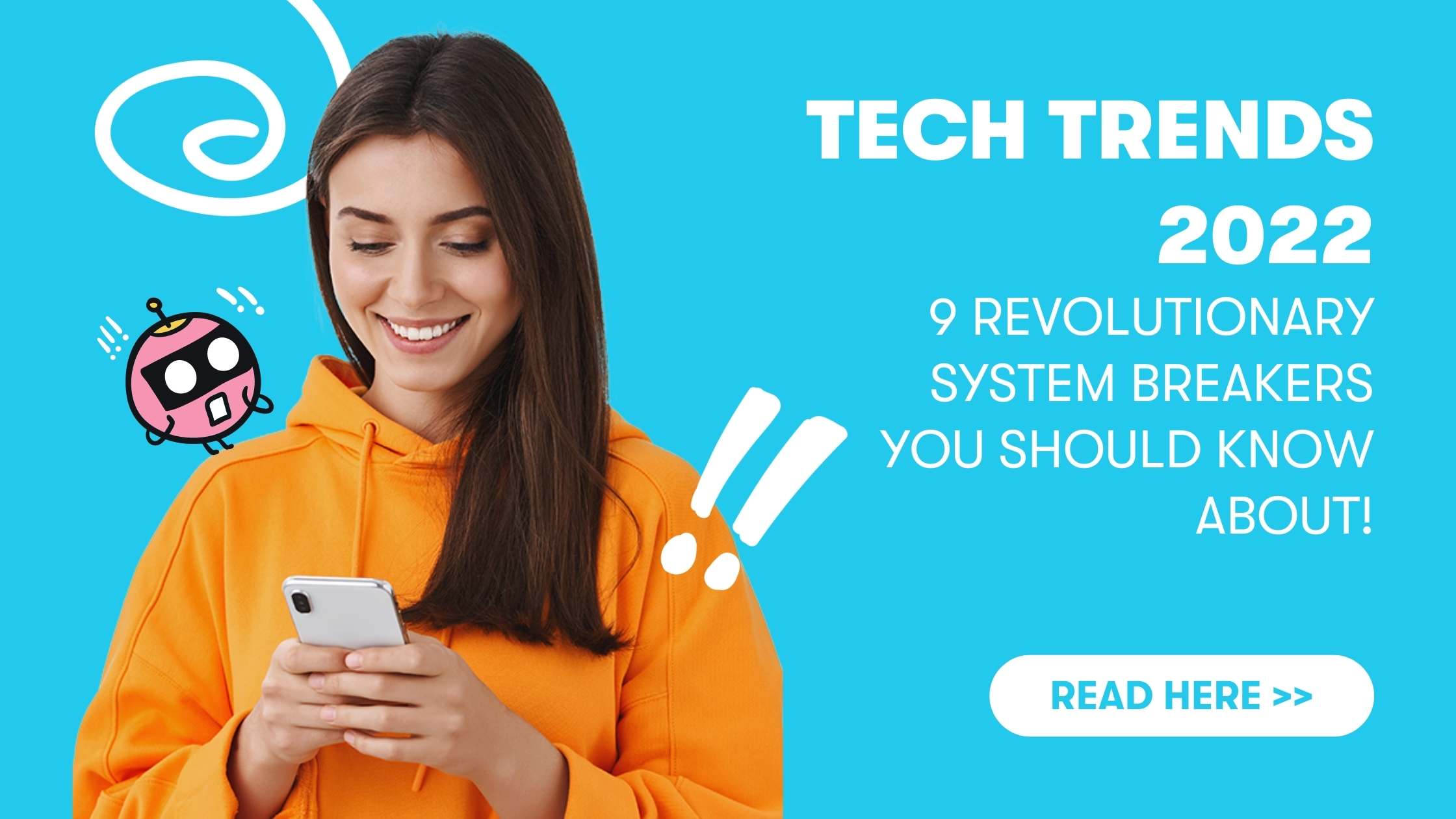Hyperautomation, Artificial Intelligence and Cyber Security Networks: These are some of the tech trends that are expected to shape the coming years for enterprises, according to IT market research firm Gartner. We have compiled a list of the nine revolutionary tech trends and explain what lies behind these trends.
These Are The Nine Tech Trends Of 2022

#1 Internet of Behaviors (IoB)
The first of the nine Tech Trends we will present you is IoB, also known as Internet of Behaviors. Computers that scan faces for masks and sensors that check whether hands have been washed to check the Corona rules of conduct and issue warnings via loudspeaker if necessary? You can do that! Another example is monitoring a driver's driving behavior to improve their safety or healthy lifestyle to adjust health insurance premiums. The extent to which technology can interfere with the personal lives of individuals depends heavily on privacy laws.
The Internet of Things (IoT) is a network of interconnected physical objects that collect and exchange information and data over the Internet. The IoT is constantly expanding and evolving in the scale of its complexity, meaning the way devices are networked together, the computations that can be autonomously processed by these objects, and the data that is stored in the cloud are evolving in more complex ways. The collection of data (BI, Big Data, CDPs, etc.) to directly influence behavior is referred to as the "Internet of Behaviors" or IoB.
The IoB is influencing consumer choices, but it is also reshaping the value chain of businesses. While some users are wary of making their data available to this technology, many others are willing to do so as long as it generally adds value - data-driven value, mind you. For companies, this means they can tailor their image along the behavior of potential customers, market products more effectively to their customers, or significantly improve the customer experience (CX) of a product or service. Hypothetically, information can be gathered about all facets of a user's life to improve efficiency and quality in general. This can have a positive impact on companies and customers alike.
The company Volvo shows in the following example how IoB technology could be applied for mutual benefit:
#2 Total Experience (TX)
"Total Experience" - that is the second of our presented tech trends of 2022, providing the best possible experience, be it for the customer, employee, or user. It is about intelligently linking all value chains in order to be able to exploit the full potential. A customer should be taken care of from the first click on the website, through an individualized customer journey, to the support after a contract has been signed. This includes automated, personalized offers that keep customers loyal to the company.
The goal of TX as a technology is simple: everyone who interacts with a brand should be offered an all-around exceptional experience. It encourages companies to no longer think of multi-experience (MX), user experience (UX), customer experience (CX) and employee experience (EX) as separate disciplines or silos, but as key elements of their overall experience.
But how can you think of this technology in practice? Gartner provides an easy-to-understand example of this: it describes a large telecommunications company that improved its Total Experience by developing a new appointment system in response to Covid-19. Now, when a customer gets close to a store, he or she automatically receives a notification via the company's app or text message that guides them through the entire check-in process. In-store, employees can then use tablets to browse and guide customers together without having to physically touch their personal devices.
This is especially important this year as contact centers continue to face challenges due to the coronavirus pandemic. New customer behaviors, expectations and channel preferences, combined with more unpredictable demand and agile ways of working mean the time is ripe for innovation and a more unified approach.
#3 Private Cyber Security
Big Brother is NOT watching you: People should not become transparent through technology. The future also includes developing tools that protect sensitive data during use. This means, for example, collecting data in a decentralized manner and analyzing it only in encrypted form. This tech trend helps companies build long-term trust with employees and customers.
#4 Distributed Cloud
With distributed cloud, the fourth tech trend in our list, cloud services are split across different physical locations, while management and operations remain the responsibility of the public cloud provider. Physical locations allow companies to comply with laws requiring data to be stored in a fixed location without having to manage an expensive private cloud themselves.
The distributed cloud is considered the cloud of the future .To make it a little easier to understand, we have attached an explainer video from IBM:
#5 Anywhere Operations
Being able to work from anywhere is gaining massive importance, especially during the Corona pandemic, but will remain important beyond. It should be possible to operate remotely from any location and not be tied to a fixed location. Physical interaction should no longer be mandatory in the long term.
#6 Cyber-Security-Net
Cybersecurity should always be reliable and flexibly controllable. New technologies often fall outside of previously existing security structures - so it's time to cast a new net that protects against attacks and is responsive.
#7 Intelligent Composable Business
An intelligently composed company, is a company that remains constantly changeable and can adapt to current situations at any time. Business decisions must be made quickly in order to remain agile. Business units should be able to be expanded and contracted at will. This includes monitoring processes, for example by means of process mining, and eliminating inefficient processes.
#8 AI-Engineering
AI engineering reliably integrates artificial intelligence into all possible processes instead of considering it in isolation for individual projects. It connects value chains and combines different technologies to drive innovation, which makes it to one of the most important.
#9 Hyperautomation
The cherry on top of the tech trends: Hyperautomation.
Everything that can be automated should be automated. Hyperautomation even goes one step further and automates automation. Repetitive, monotonous and error-prone processes are expensive and prevent companies from progressing. Automation makes them more effective and efficient. Hyperautomation can already automatically identify and eliminate inefficiencies in processes.
Conclusion: Connecting Man And Machine
Companies that want to become pioneers of digital transformation should adapt to tech trends as quickly as possible. The Corona pandemic is driving the development of digital and automated technologies on a massive scale.
At the heart of all these tech trends: connecting people and machines. The tech trends presented are location-independent, resilient, and human-centric. If you succeed in using technology in this way to get the best out of your employees, nothing will stand in the way of your transformation.









